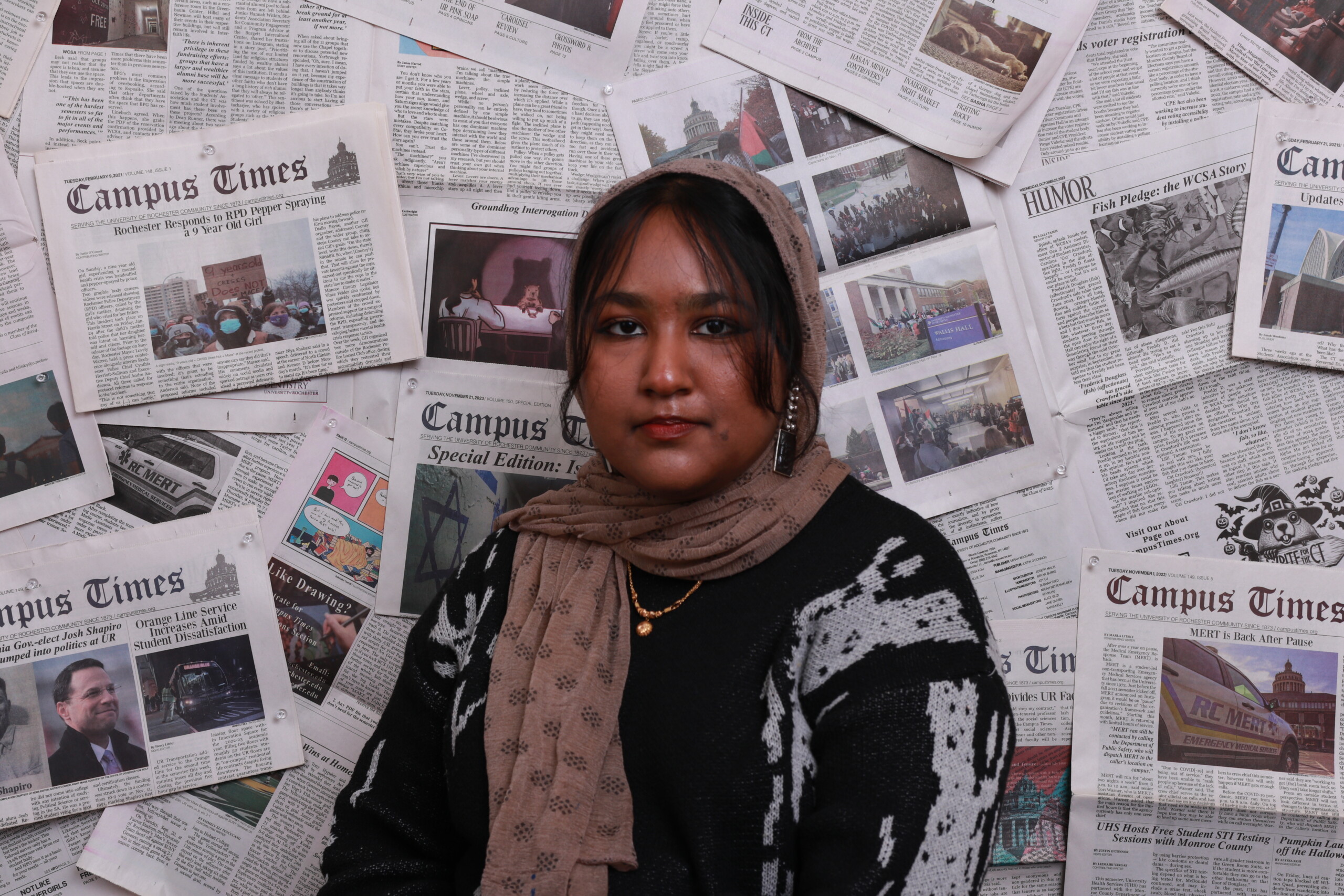As we go about our everyday lives, we unconsciously pick up cues when talking to people — through this process, we can determine a speaker’s emotion relatively confidently from just their tone or pitch, especially if they are someone close to us.
“When the other person uses the same set of words, but a slightly different intonation or cadence, or even like a slight change in the tone of voice, you can pick up on some subtle differences in meaning, right?” Dr. Chigusa Kurumada, Assistant Professor in Brain and Cognitive Sciences said. “It is actually still a big mystery, like a lot of linguists and cognitive scientists have been studying this, but nobody knows what it is that we are actually picking up on.”
Kurumada currently leads a research lab on language communication and learning. She works with Dr. Loisa Bennetto, whose background lies in the neurocognitive basis of autism. Their recent study lies at the intersection of their two fields, stemming from a fascination with the normal day-to-day interactions of humans and how much speech plays a role in us understanding each other.
Kurumada and Bennetto recently published an article titled “Perception and adaptation of receptive prosody in autistic adolescents,” which observed how autistic adolescents had more trouble picking up the subtle cues in speech, such as change in pitch, compared to neurotypical adolescents. The article focused on the importance of speech prosody, a cognitive concept used to describe the variation in rhythm, timing, and intonation of speech. This study aimed to link linguistic and social factors in language comprehension to autism in adolescents.
Why observe speech in autism? “Speech prosody was actually one of the first characteristics that clinicians and researchers used as a diagnostic criterion,” Kurumada said. “It’s no longer the case, now that we know a lot more about autism, […] but it’s something that a lot of doctors and researchers and clinicians know — that there is something special about people’s uses of prosody, and autistic individuals’ uses of prosody, and those understandings of prosody.”
The study hypothesized that it would be more difficult for autistic individuals to pick up on changes in speech prosody, thus interfering with their ability to interpret the meaning of how words are said and the emotional nuances conveyed through speech.
There were three groups of participants: one group of autistic adolescents ages 12 to 17, one group of non-autistic adolescents, and non-autistic young undergraduate students from the University as a control group.
Why this age range? Kurumada explained: “During the adolescent years, your social network expands, and there is this strong need for you to be able to adjust your perception to different types of people […] That’s the time when adaptation becomes really important for speech communication.” Social stigma is also perceived more during this period, which pressures adolescents to pay more attention to the way they speak and “adjust their speech production to better understand others.”
From a neurological context, our brain experiences changes to the way we process voices during adolescence. Although there is increased brain activity in response to familiar voices as children, brain activity increases for unfamiliar voices compared with familiar voices as we age. During earlier stages of adolescence in autistic children, however, there is a weaker preference for familiar voices, which may contribute to their linguistic development.
There were three phases used in this study: pre-test, training, and post-tests. The study used a system called Gorilla.sc, which is an online experimental platform that allowed them to present stimuli and collect responses from the participants.
In the initial test, the participants would hear 44 items or sounds and were required to say whether the sentence was a question or not. Dr. Kurumada played recordings of the sentences they heard. As the recordings progressed, the statement “It’s raining” slowly turned more into the question “It’s raining?”
During the training, the participants were presented with the most statement-like item and had to decide whether it was a statement or a question. This time, however, the participants were provided feedback regarding if they were correct or not. They also played ambiguous sounds resembling something between a statement and a question, and provided feedback. This went on for 30 items, for around four minutes.
“Essentially,” Kurumada clarified, “the idea is that […] if we provide some ambiguous items and provide feedback that [says] it’s supposed to be a question, that could, if our perception is adaptive, […] shift their interpretation.”
From this, the prediction was that if the participants were presented with these ambiguous items again in the post-test, they would say that the sound was a question more often compared to how they answered at the very beginning of this experiment due to the feedback given. Thus, the responses would be expected to shift before and after the training.
The study found that although the responses of non-autistic adolescents and non-autistic college students did shift, whereas responses by the autistic adolescents didn’t shift. This suggests that given the same amount of input and same amount of feedback, autistic individuals seem to be less likely to adapt or shift their personal interpretation of speech patterns.
What are the next steps? One way would be “increasing the age range, to see whether this flexibility may already be present for younger or older autistic kids outside of the adolescent group they tested,” Kurumada said. Kurumada also wants to expand the types of intonation contours and meanings used in the study as well.
A “dream project” that the lab aims to better understand is where these flexibility differences are coming from. “Is this a perceptual property that’s ingrained in autistic individuals’ perceptual and cognitive system?” Kurumada asked. “Our dream project that we hope to pursue is to actually observe younger kids and older kids’ everyday linguistic communication at home, at school, and elsewhere. And, we want to get more information about how they actually communicate with other people outside this lab environment.”
This would help in answering the question of if discrepancies in linguistic understanding in autistic children are derived from the fact that autism is a learning disability or from other social factors that we can also see in non-autistic individuals. For example, the difference might come from the individual’s social experience and everyday linguistic experience, which includes the number of people they talk to and types of social communication they might have on a daily basis.
What’s more, when it comes to picking up social cues, neurodivergent people aren’t the only ones who may struggle. Even neurotypical immigrants whose native languages differ from the national language can also struggle to pick up on changes in speech prosody. Though they may speak English well, immigrants might not be aware of the social cues used in a foreign country.
In addition, Kurumada’s lab has a separate line of work looking at “second language learners’ understanding of American English, and then also conversely, native speakers’ understanding of immigrants or non-native accented people’s speech.”
“To what extent is it nature, to what extent is it nurture?” she wonders.
The study of speech prosody connects to an integral component of our daily lives: how we communicate. “We have a lot of international students and a lot of neurodivergent students, and sometimes we feel like […] something is off in this communication, and we can’t put our finger on one thing and then say, ‘Hey, this is maybe creating some misunderstanding,” Kurumada said. “But with experience, we can adapt to other people’s speech. So having that conversation, I think, is going to be useful.”



